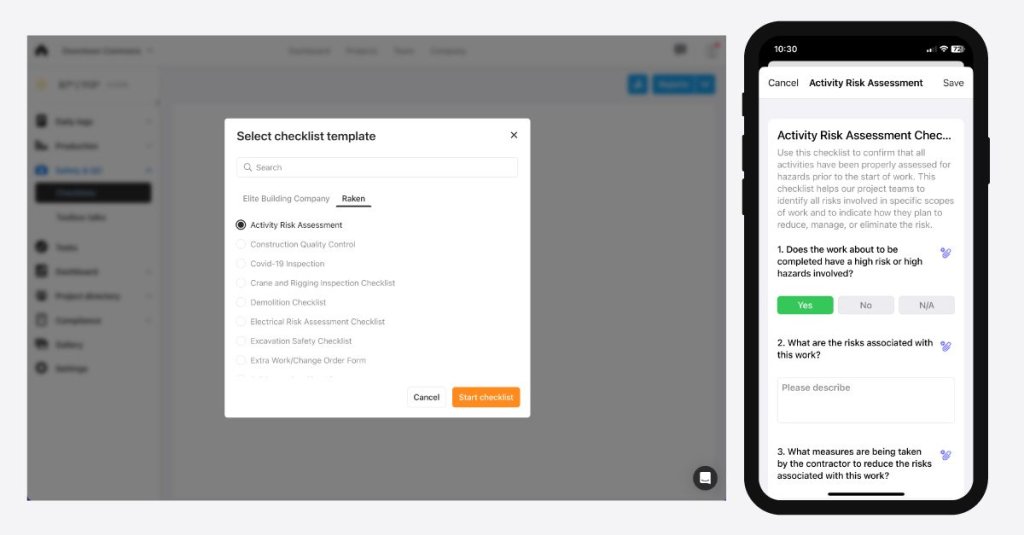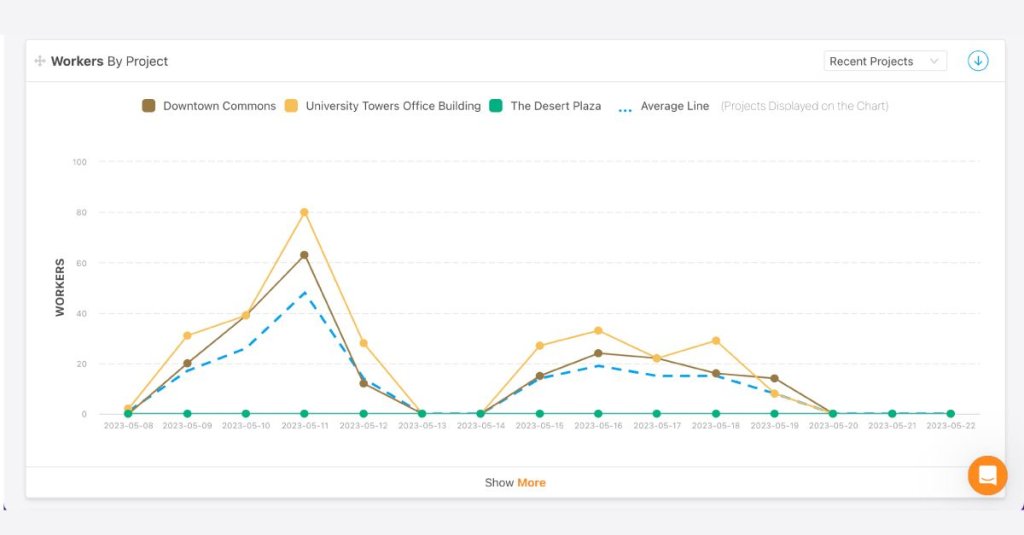For the past several years, the construction industry has increased industry productivity by incorporating more technology.
Still, many construction companies have resisted this move towards technology, since incorporating technology can take time. But not all construction technology takes weeks to pick up—some tech, specifically designed to be used in the field, takes little to any training for even the least tech-inclined worker.
So if incorporating mobile data capture is doable, what do construction companies stand to gain?
Let’s start by looking at what mobile data capture and collection include. From there, we can take a look at how this construction tech benefits businesses.
What is mobile data capture?
Mobile data capture is the process of collecting real-time data in the field. Data can include the quantity of a material installed, hours worked, or even safety checklists and daily reports. Because mobile data capture is designed to help with documentation outside of an office, it is completed from a cell phone or tablet, although documentation is also accessible from a desktop for anyone in an office.
One way that mobile data collection software improves productivity is by providing templates for documentation. Safety checklists and other reports become quicker and more detailed because templates are provided. The only thing needed for reporting is to complete mobile forms, which provide Y/N options, fill in the blank, drop-down menus, or similar inputs. Mobile forms save time because the context is already provided, so supers or those filling out documentation can get on with their jobs.
Production tracking is also a major part of mobile data collection. Workers are able to quickly input exactly how much concrete was poured in a day, log workers’ hours, and track equipment usage—all from the field. All the numbers needed to evaluate project productivity are immediately available—and some software even calculates production efficiency for you.
Data collection software means all documentation and data is completed quickly using an app at the project site, and management receives instant updates on safety, productivity, and reports.

Why is mobile data collection important in construction?
Working in construction means constantly changing plans, due to anything from inclement weather to architectural changes. Many of these changes and updates are happening on busy construction sites. These are not computer-friendly spaces, so pen and paper is often the go to for construction site documentation.
But mobile data collection via a construction field app provides a more effective way of documenting what goes on in the field. Using an app with mobile forms, all forms and data become instantly visible to stakeholders—on and off the construction site. Plus, using a mobile phone for data collection is much more durable than pen and paper-especially with the right phone case. (Check out our blog post on The Best Phone Cases for Construction Workers for our recommendations.)
Because everything is completed in the field, reports and production numbers are more accurate, and the possibility of something getting overlooked (because those in the field don’t always have pen and paper on them) is eliminated.
1. Real-time communication with mobile forms
A single construction project can involve a myriad of people—from multiple subcontractors, to payroll, and the project owner—there’s a lot of communication that needs to happen in a single day.
Problem is, pen and paper documentation can easily get lost, or best-case scenario, end up in a pile in the office. Any course-correcting changes that should have been made based on updates from the field, are now too late to have as much of an impact.
Mobile data capture means as soon as supers or other data-collecting individuals sign off on data, the office instantly has access to that day’s updates. No more delays in communication—and everyone has access to the same information because everything is visible through the software, instead of being stuffed inside a filing cabinet.
2. Saves time and errors
Not only does data collection save time with mobile form templates, making entering data quick and painless for those in the field, but it also eliminates the need for manual entry or copying written information over to a computer.
Collecting data with pen and paper always means there’s a risk that some data will be illegible at the end of the day. And the more times information is copied over, the more opportunity there is for human error and small mistakes—mistakes that can still have big consequences. Whereas mobile forms eliminate the need for copying information, saving time and reducing the risk of errors.
After general contracting company Hensel Phelps began using Raken for mobile data collection, the company’s Virtual Design Construction Manager, Siavash Mohseni, said “we’ve seen increased efficiency and decreased work hours for our field staff as well as more timely reporting.”
The immediate benefits of using digital forms is quicker workflows with more accurate data.
3. Production insights
Perhaps one of the most beneficial aspects of digital solutions is the added benefit of insights. Some softwares provide insights—so you can see how the day’s data impacts your business. Being able to see exactly where a project stands—on a daily basis—gives you the ability to make better decisions about resource allocation, which almost always will save you money.
Insights can even take the information provided and turn it into visuals and graphs. These visual tools help you fully realize the impact of things like productivity, business spend, and scheduling—all in real time.
Calculating insights on your own can take hours, so it’s impractical to do this every day. This is especially true if you want to know the productivity of specific cost codes.
But having insights into your construction data means you have the resources to make timely business decisions confidently—because you will always know exactly where your projects, and even individual cost codes, stand.

How the construction industry is using mobile data collection
Mobile data collection can be used in almost every area of construction—including documenting safety, materials used, hours worked, and daily reporting, just to name a few.
As the construction industry slowly catches up to other industries’ productivity, mobile data collection is becoming more and more common—especially among construction companies committed to doing their best to stay on track with project timelines and productivity.
With historical data on project efficiency, down to individual cost codes, future project budget and timeline estimates can become increasingly accurate. Don’t forget that all this data means better decisions during a project too—so that overall project efficiency will inevitably grow.
Get started with mobile data capture using Raken
Raken is mobile construction management software designed for use in the field, making it an incredibly easy and quick way to document:
Production tracking (with insights)
With features like voice-to-text notes, photo and video attachments, and the weather forecast always included in daily reports, Raken makes it easy to instantly provide context and more in-depth updates—and still save time.
If you’re looking for ways to save time and get real-time data and insights—consider incorporating a mobile data collection tool like Raken.
Want to see if Raken could be a good fit for your company? Schedule a demo to learn how Raken could help meet your company’s needs.
